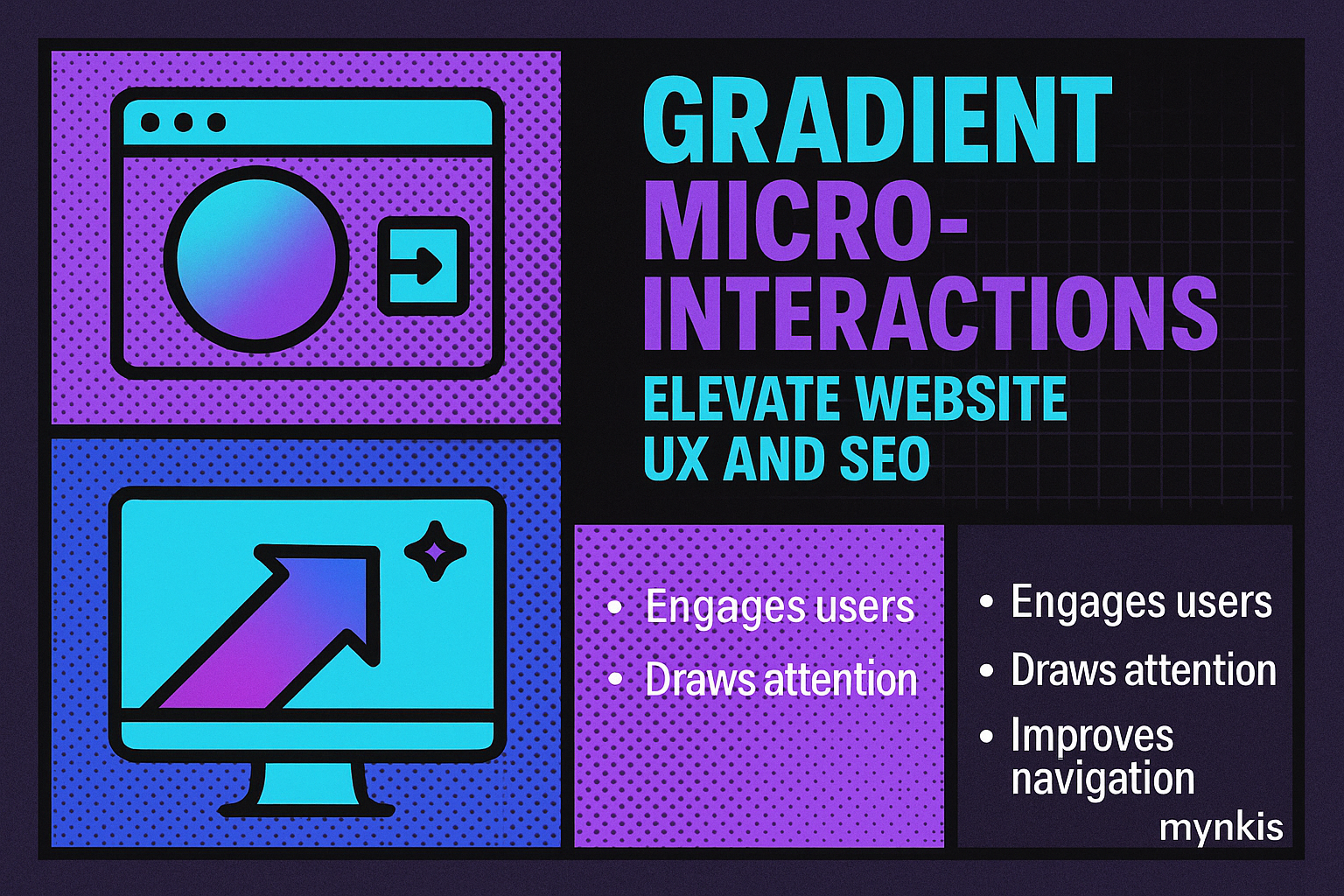Schedule a Demo
Gradient designs have surged in popularity, transforming websites into vibrant canvases that pull users into an engaging digital experience. Not long ago, a flat design was the go-to for many developers—but these days, gradients bring a fresh, dynamic flair that beautifully captures attention. From the soothing gradient hues transitioning through a sunset-inspired color palette to bold, contrasting blends that command attention, the strategic application of gradients can dramatically influence user mood and behavior.
Employing gradients isn't just about looking trendy; it's about subtly directing the user's gaze towards key elements. A well-implemented gradient can make call-to-action buttons pop or guide the visitor's eye flow across the page. The key is subtlety; gradients should enhance, not overwhelm. For instance, in my work on booking websites, I've seen how a gentle gradient can subtly highlight the 'Book Now' button, improving conversion without the user realizing why they clicked.
Micro-interactions might seem minor, but they pack a significant punch in the world of user experience (UX). From the satisfying click of a button to animations that respond to user inputs, these little details make a website feel alive and interactive. I've experienced firsthand how adding a subtle hover effect on a booking calendar can increase user engagement by making the interaction more intuitive and less daunting.
The power of micro-interactions lies in their ability to provide instant feedback and improve usability. When a user makes a selection or moves through a booking process, these small animations affirm their actions, building confidence and a sense of control. However, the design must strike a balance. Overdoing micro-interactions can result in a cluttered and distracting experience, so based on available research, individual implementation results may vary. For owners of booking-enabled sites, a single, well-timed micro-interaction—like an animation celebrating the completion of a booking—can make a lasting, positive impression.
The synergy between gradients and micro-interactions can elevate the user experience to new heights. A gradient background shifting gently as a user hovers over different options can create an immersive experience. This blends not just color but also engagement, making the user feel part of the web's flow.
I recall a project where we integrated a gradient path highlighting the user's journey through a booking process. As users selected their dates, a smooth gradient followed their choices, paired with gentle micro-interactions to confirm each step. The results? Conversion rates soared because the path was clear, engaging, and aesthetically pleasing.
In today's SEO landscape, aesthetics play a substantial role alongside technical optimization. Gradient designs, when used thoughtfully, can increase a page's visual appeal and indirectly boost dwell time, a critical factor for SEO. But it's not just about the eye-catching design; SEO performance must keep pace with elegant visuals.
From an SEO perspective, ensuring these elements don't compromise site speed or mobile responsiveness is crucial. It's tempting to make a visually stunning site, but loading times can hurt search engine rankings. By implementing optimized code for gradients and micro-interactions, we ensure they enhance the experience without degrading performance. For business owners, this means higher engagement and better organic search results, combining beauty with efficient search engine optimization for custom software development and enterprise web solutions.
As digital trends evolve, the role of gradients and micro-interactions will likely expand into more nuanced and sophisticated applications. We're seeing a shift where aesthetic enhancements become standard tools in the UX designer's kit, especially for enterprises. For a C-level executive or an entrepreneur making choices about their website's design, keeping up with these trends is more than a luxury—it's a necessity for staying competitive.
Imagine future web interactions that not only guide but anticipate user behavior, smoothing out the journey towards conversions, like in a high-stakes enterprise web solution environment. To achieve this, following the latest design studies and understanding user psychology can guide the integration of such elements. Businesses stand to gain a significant competitive advantage by embracing these nuanced design elements early.
When implementing gradients, the top practice is to use them in moderation. They can serve as backdrops or to accent specific areas but shouldn’t dominate the entire interface. Testing with different user groups can highlight which gradients resonate most effectively with your audience.
For micro-interactions, the best practices revolve around intuitive design and immediate feedback. They should seamlessly blend into the user’s journey, enhancing without distracting. Leveraging user feedback to refine these interactions can make your site feel uniquely tailored.
While exploring the integration of gradients and micro-interactions, consider the ethical implications of your design choices. A design that manipulates user behavior through excessive gradients or overeager animations can seem coercive rather than engaging. Responsible design considers the user's autonomy and aims to enhance their experience ethically and transparently.
Ethical design in web development doesn't just respect the user; it also meets the expectations of search engines for authenticity and user-first principles. By keeping this in mind, you pave the way for better enterprise web solutions and custom software development outcomes focused on long-term value rather than short-term gains.
The integration of gradient designs and micro-interactions marks a new frontier in user experience, where every element can foster an exceptional journey. For business owners keen on capturing and converting, leveraging these tools wisely provides not just a new layer of depth but also the potential for significantly improved user interaction and SEO performance.
From the meticulous blend of a gradient guiding your eyes to the comforting flicker of a micro-interaction, modern web design has much to offer. Embrace these trends with an eye towards enhancing the user's path on your site, and your commitment to evolving with the digital landscape will be palpable in every pixel.
